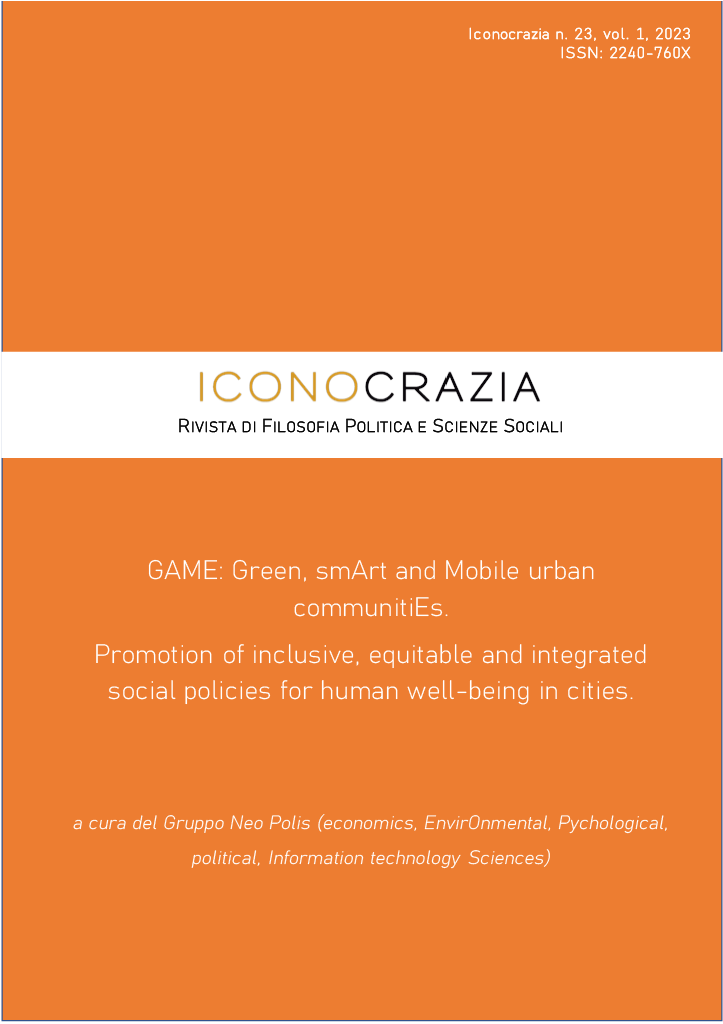The imagery of the intersection between game and life. The “Love and Anarchy” case.
DOI:
https://doi.org/10.15162/2240-760X/1852Parole chiave:
Gamification, tv series, imagery, ludic century, pop cultureAbstract
Love & Anarchy is a Swedish series that has been running on Netflix since autumn 2020. The series follows the seduction game between the business consultant Sofie and the young IT employee Max: every day one of the two challenges the other to make an action that goes beyond the limits of social norms. Sofie and Max's relationship brings to the stage the ambivalent imagery of gaming in contemporary sociality, that can be tracked down to the success of the "challenges" on social networks, along with the exploitation of gamification in marketing or “serious game” in social issues and public policy. In an anomic social context due to the rapidity of transformations, the game seems to offer a disciplinary guide that drives insights and decisions in the absence of other references. Through the analysis of the audio-visual text of the series and the comparison with other similar experiences in pop culture, this paper means to explore the current hybridization of ludic dimension and everyday life, along with the chance of putting individuals in touch with their deeper feelings and the collapse of separation between duty and leisure.Riferimenti bibliografici
Abruzzese, A. (1996). Analfabeti di tutto il mondo uniamoci. Genova: Costa&Nolan.
Caillois, R. (2001) [1958]. Man, Play and Game. Chicago: Chicago University.
Carr, N. (2010). The Shallows: What the Internet Is Doing to Our Brains. New York: Norton&Co.
Cassirer, E. (1944). An Essay on Man. New Haven: Yale UP.
Deterding, S. (2014). The Ambiguity of Games: Histories and Discourses of a Gameful World in Waltz, S. & S. Deterding (eds.) The Gameful World. Approaches, Issues, Applications. Cambridge MA: MIT Press, pp. 23 – 64.
Dotti, M. & M. Esposito (eds.) (2016). Ludocrazia. Roma: ObarraO.
Goffman, E. (1967). Where the Action Is: Three Essays. London: Allen Lane.
Gordo, A. (2020). Social Challenges. The Serious Game of Digitalization in C. H. Gray, H. J. Figueroa-Sarriera & S. Mentor (eds.), Modified. Living as a Cyborg. London: Routledge.
Maffesoli, M. (1983) [1979]. La conquista del presente. Roma: Ianua.
Sennett, R. (2006). The Culture of the New Capitalism. New Haven: Yale University Press.
Thaler, R. & C. Sunstein (2014). Nudge: Improving Decisions About Health, Wealth and Happiness. London: Penguin.
Tommasi, F.V. (2016). Gioco in, Dotti, M. & M. Esposito (eds.). Ludocrazia. Roma: ObarraO, pp. 111-113.
Turner, V. (1982). From Ritual to Theatre: The Human Seriousness of Play. New York: PAJ Publications.
Viola, F. & I. Cassone (2017). L’arte del coinvolgimento. Emozioni e stimoli per cambiare il mondo. Milano: Hoepli.
Waltz, S. & S. Deterding (eds.) (2014). The Gameful World. Approaches, Issues, Applications. Cambridge MA: MIT Press.
Zimmerman, E. (2014). Manifesto for a Ludic Century in Waltz, S. & S. Deterding (eds.) The Gameful World. Approaches, Issues, Applications. Cambridge MA: MIT Press, , pp. 19-22







